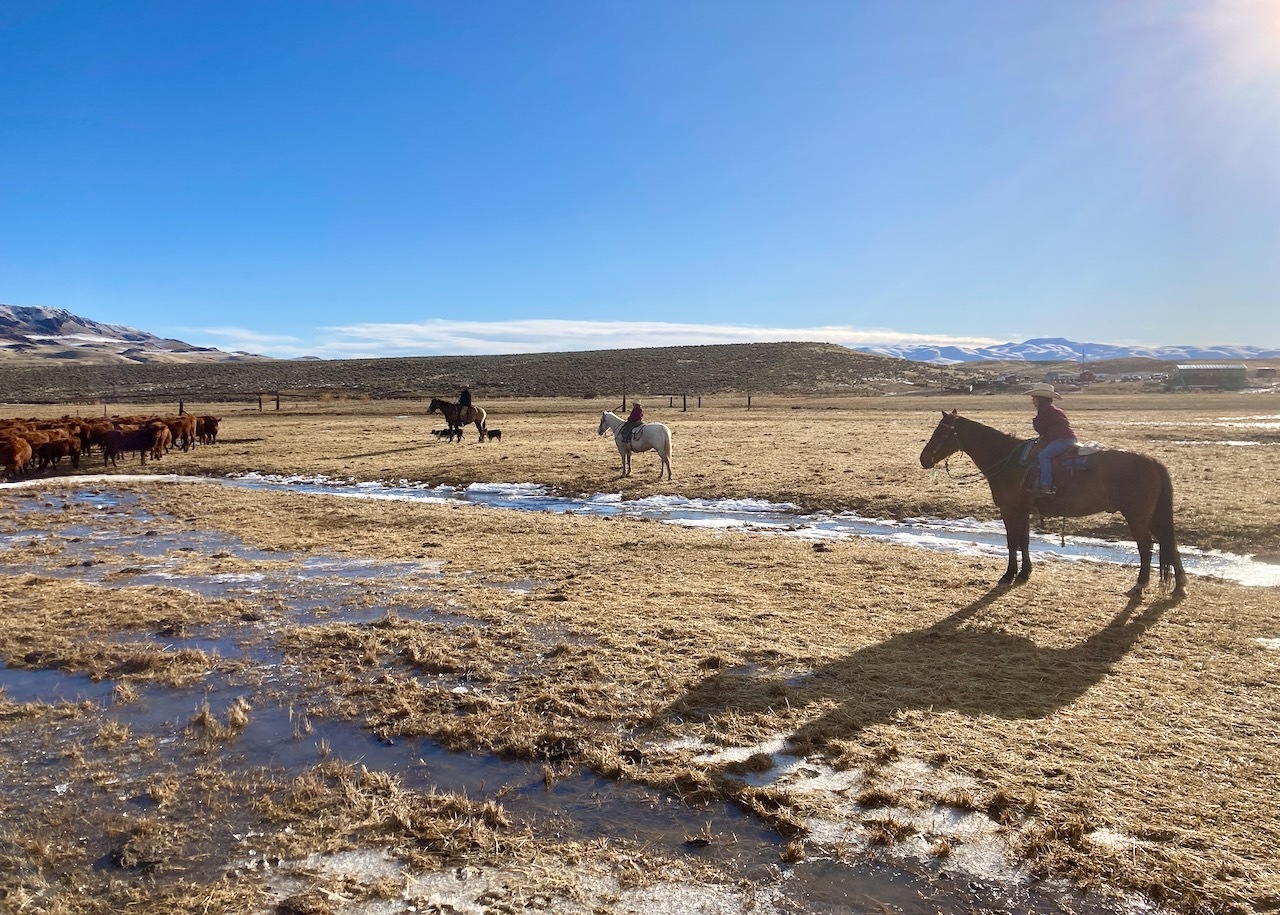When It Rains, It Pours, or Floods! 🌧️
posted on
February 22, 2025
Spring is our favorite season.
There's nothing better than coming through a cold winter and seeing the signs of spring all around. The green grass emerges, and the red-winged blackbirds return with their song, and then there's flooding.
We receive most of our moisture for the entire year between December and March. Flooding is expected at this time of year. With the fluctuating temperatures, it can snow one day and rain the next. When you get snow and then rain on top of the snow, you experience the most significant flooding.

Although flooding is typical this time of year, predicting when and how it will impact our animals is always challenging. As we approach the first of March (when we begin calving), we become pretty anxious to move our cows off the meadow ground that is susceptible to flooding and onto the rangeland.
There's nothing worse for calving than not having a good, consistent, dry place for cows to calve.
After the last rainstorm, the weather appeared decent enough to gather the cows and take them to the rangeland or upper country. The range is the ideal spot for cows to calve. They have plenty of space to spread out and can find nice dry spots to lie down. The warm canyon walls promote rapid grass growth below, which is crucial for cows who are having babies!

On that beautiful day, we gathered all the cows, leaving the ones with baby calves behind, and headed out. Many of our cows are close to calving, so a nice, long, brisk walk is the perfect way to prepare them for calving.
We had to cross our swollen creek, but our good-ole cows led the way, for they knew green grass awaited them down in the canyons where they call home.

Our cows spend most of the year on the rangeland. When the range gets too snowy, they return to our meadows for two months. We process them through the chute to check each cow and ensure all the cattle are accounted for before they enjoy hay stored for winter for a few weeks before returning to the range. The cows know the range well and can navigate its vast expanse. We check on them frequently throughout the year and provide them with Redmond salt to meet their mineral needs.



